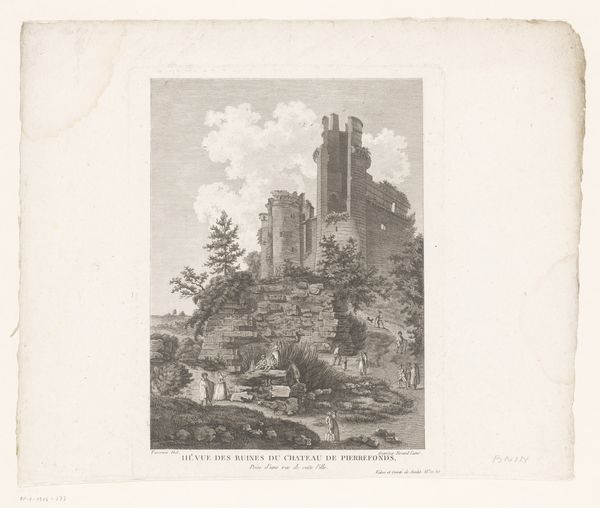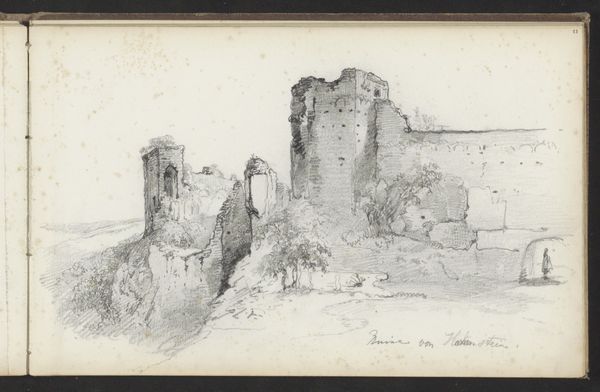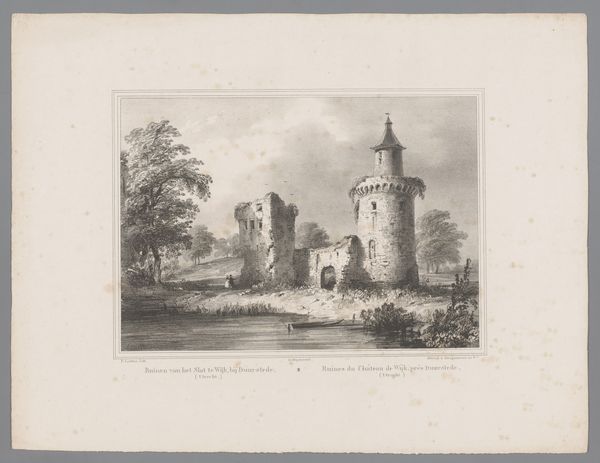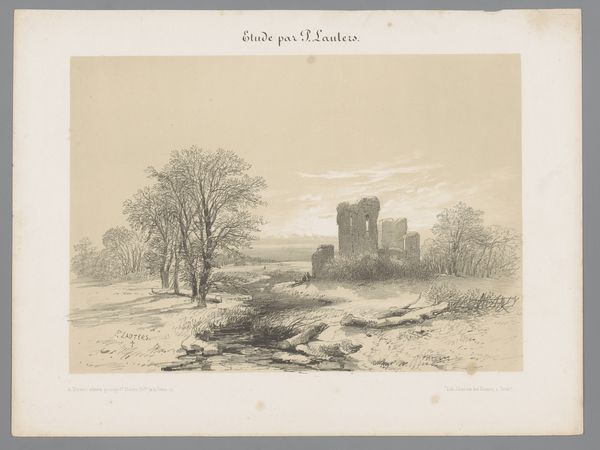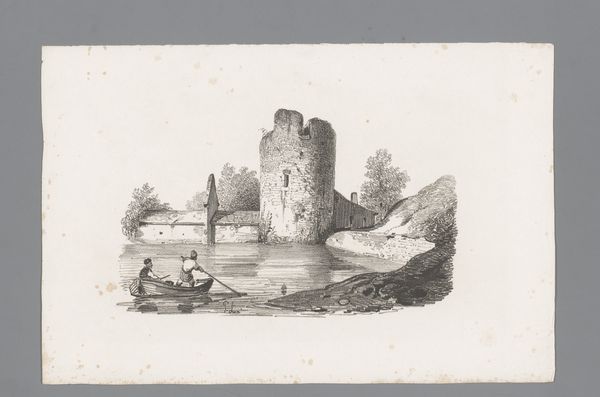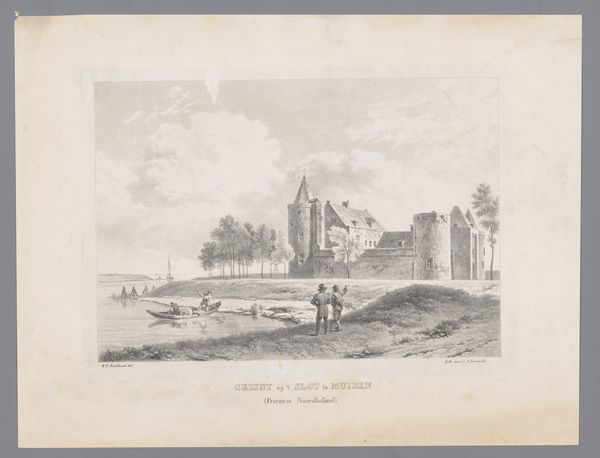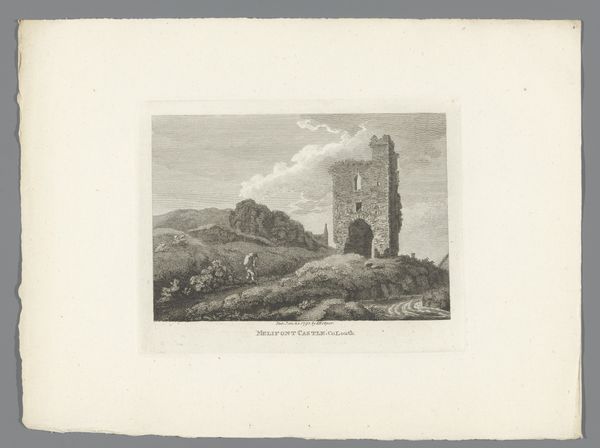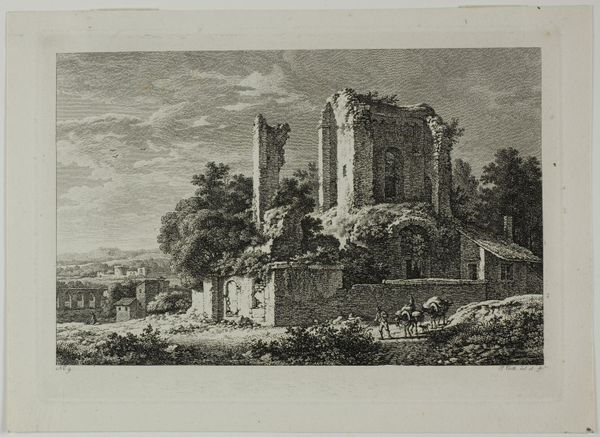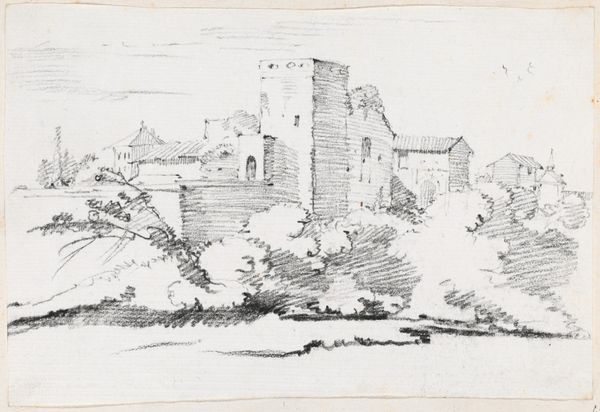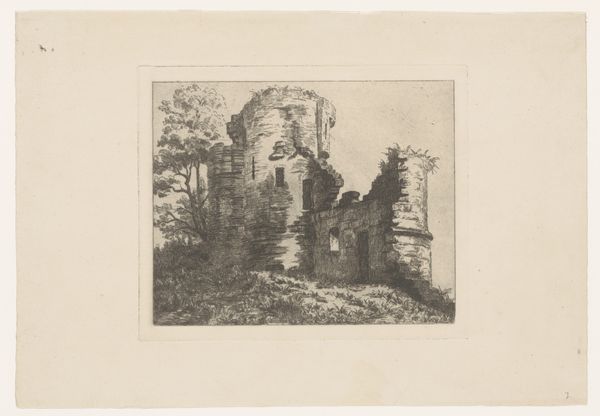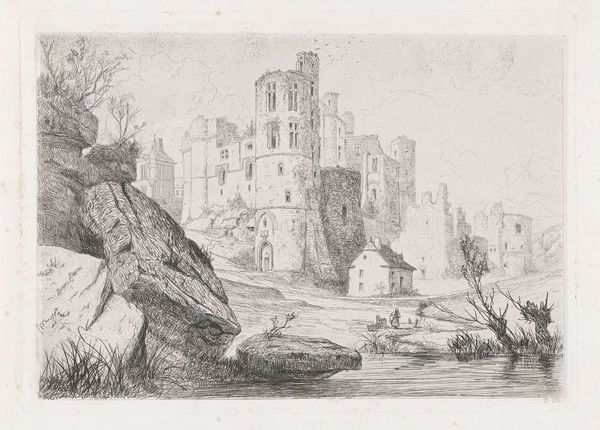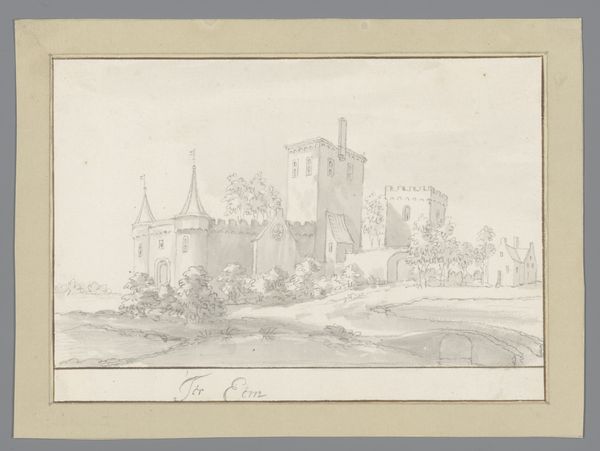
drawing, pencil
#
drawing
#
landscape
#
romanticism
#
pencil
#
history-painting
Dimensions: height 162 mm, width 242 mm
Copyright: Rijks Museum: Open Domain
Curator: We're looking at "Gezicht op een ruïne met toren," or "View of a Ruin with Tower," a pencil drawing created in 1839 by Paulus Lauters, part of the Rijksmuseum's collection. Editor: Instantly, I feel a sense of melancholy, even fragility. That skeletal tower against the blank sky…it’s like a sigh rendered in graphite. And yet, life persists—there are figures and sheep near the ruins. It’s this contrast that draws me in. Curator: The ruined tower acts as a symbol of mortality. Ruins throughout history have come to represent the ephemerality of power, wealth, and even entire civilizations. The Romantic artists were fascinated with the spectacle of decay. Lauters is clearly working within that tradition here. Note also the way the landscape is carefully rendered, to make the ruins seem ancient, almost timeless, a reminder of what has been. Editor: True. The Romantic impulse. Though for me it is personal rather than grandiose. The sheep are nonchalantly grazing, a mother talks with her son: it feels like time doesn’t stand still despite the ruins of something important in the middle. The monument crumbles and life strolls on. There is comfort in it. Curator: That reading completely accords with Romantic ideas about the power of nature to reclaim what is lost. The small human figures in the scene reinforce that sense of scale. They are witnesses to history but are not overwhelmed by it. Editor: It makes me wonder about what we’ll leave behind. What fragments will future generations piece together, and what stories will they tell about us from our crumbling remnants? And more to the point: how sheep will continue chewing and babies will cry as always, regardless of whatever glory we leave for dust? Curator: It makes me think, as a symbol, the ruined tower will probably be around long after all of us. That kind of historical continuity, how a symbol shifts meaning yet still resonates through ages...that’s incredible to consider. Editor: So, it's not just a melancholic landscape but an ongoing dialogue between past, present, and future, with a bit of sheep thrown in. Always with the sheep!
Comments
No comments
Be the first to comment and join the conversation on the ultimate creative platform.
